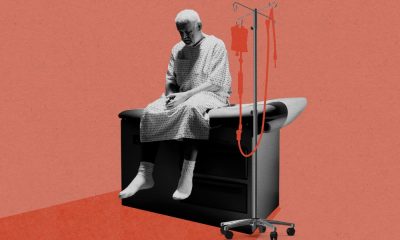A new study has found that migraine has long-lasting effects on the brain that effectively change brain structure. What’s more, these changes are visible under an MRI scan.
“In people with chronic migraine and episodic migraine without aura, there are significant changes in the perivascular spaces of a brain region called the centrum semiovale,” study co-author Wilson Xu, Keck School of Medicine of the University of Southern California in Los Angeles, said, reported NewsMedical. “These changes have never been reported before.”
The results of the study are reported to be presented at the annual meeting of the Radiological Society of North America (RSNA).
Migraine is a condition characterized by an intense recurring headache. Other symptoms may include nausea, weakness, and light sensitivity. Migraine is a very common problem that many people suffer from. According to the American Migraine Foundation, over 37 million people in the U.S. have migraine conditions, and up to 148 million people around the world suffer from chronic migraine, reported MedicalDialogue.
Perivascular spaces are fluid-filled cavities that surround blood vessels in the brain. They are most commonly found in the basal ganglia and white matter of the cerebrum, as well as along the optic tract. Centrum semiovale is the central part of white matter and white matter hyperintensity is the lesion that “lights up” on MRI.
Several factors such as abnormal conditions at the blood-brain barrier and inflammation can affect perivascular spaces. Enlarged perivascular spaces, in particular, may indicate small vessel disease.
“Perivascular spaces are part of a fluid clearance system in the brain,” Xu explained. “Studying how they contribute to migraine could help us better understand the complexities of how migraines occur.”
The researchers used ultra-high-field 7T MRI to discern structural minute changes in the brain during different types of migraine.
“To our knowledge, this is the first study using ultra-high-resolution MRI to study microvascular changes in the brain due to migraine, particularly in perivascular spaces,” Xu said. “Because 7T MRI is able to create images of the brain with much higher resolution and better quality than other MRI types, it can be used to demonstrate much smaller changes that happen in brain tissue after a migraine.”
Participants in the study included 10 chronic migraine patients, 10 episodic migraines without aura patients, and five healthy controls with similar ages. All the participants were between 25 and 60 years old. Special attention was paid to avoiding patients with overt cognitive impairment, brain tumors, prior intracranial surgery, MRI contraindications, and claustrophobia in the study.
Statistical analysis found that the number of enlarged perivascular spaces in the centrum semiovale was more pronounced in patients with migraine compared to healthy controls. Also, the quantity of enlarged perivascular space in the centrum semiovale was in proportion to white matter hyperintensity severity in migraine patients.
“We studied chronic migraine and episodic migraine without aura and found that, for both types of migraine, perivascular spaces were bigger in the centrum semiovale,” Xu said. “Although we didn’t find any significant changes in the severity of white matter lesions in patients with and without migraine, these white matter lesions were significantly linked to the presence of enlarged perivascular spaces. This suggests that changes in perivascular spaces could lead to the future development of more white matter lesions.”
Xu believes that their study “could help inspire future, larger-scale studies to continue investigating how changes in the brain’s microscopic vessels and blood supply contribute to different migraine types.” The end goal is that the study “could help us develop new, personalized ways to diagnose and treat migraine.”
.
















